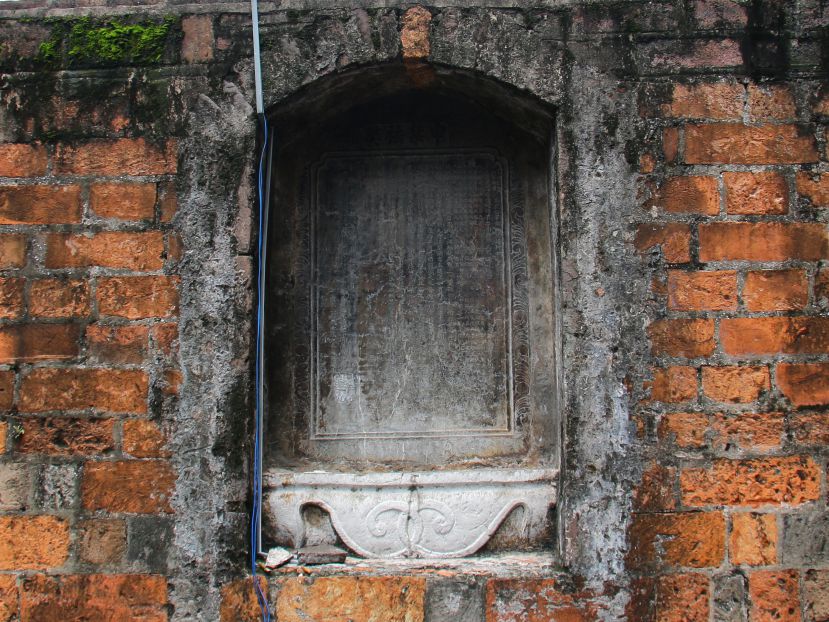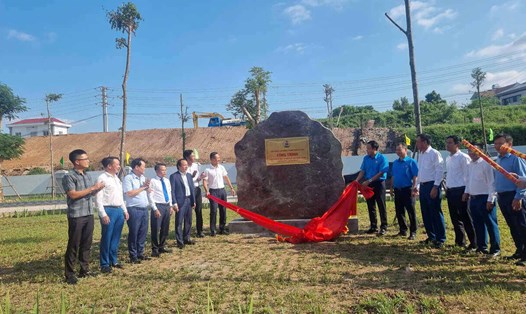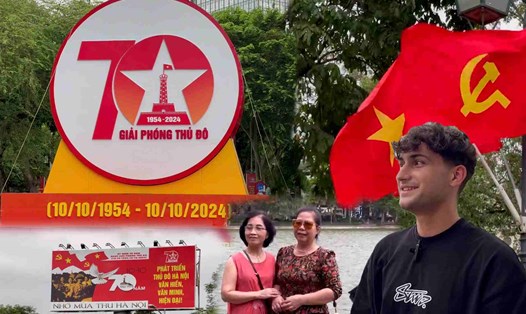The last gate of the capital
From the location of Long Bien Bridge along Tran Nhat Duat Street towards Chuong Duong Bridge, O Quan Chuong Street is on the right side of the road. Right from the intersection between Tran Nhat Duat Street and O Quan Chuong Street, anyone can see an ancient gate - an ancient and long-standing citadel gate. For every citizen of the Capital and tourists who have visited Hanoi, O Quan Chuong Gate has become familiar as an indispensable part of memory. O Quan Chuong Gate was built in the 10th year of Canh Hung (1749).
Under the Nguyen Dynasty, in the third year of Gia Long (1817), the gate was rebuilt. After more than two centuries, Quan Chuong Gate still retains the architecture and artistic style of the early 19th century. It is one of the important gates throughout the development history of the Capital because of its important geographical location in terms of military defense and is one of the main trading points on the Red River. Quan Chuong Gate is currently located at the intersection of O Quan Chuong Street - Hang Chieu Street and Thanh Ha Street - Dao Duy Tu Street.
Quan Chuong Gate also has many other names such as Thanh Ha Gate. During the French rule in Hanoi, the French called it Jean Dupuis Gate. Currently, looking from the Red River, on the arch of the main entrance, there are still 3 words (Chinese characters Dong Ha Mon) which means Dong Ha Gate.
Quan Chuong Gate consists of 1 main gate and 2 side gates, at each gate there are traces of side gate arches connecting from the side gate to the main gate. The gate is built in the form of an arch, at the main gate there is a watchtower above for guarding, the two sides of the side gates are left without roofs. Quan Chuong Gate is built with large rectangular bricks, the path is paved with square Bat Trang bricks, the main gate is paved with green soil.
Currently, on the wall of the gate, there is still a stone stele named “Than Cam Khu Te” (order to prohibit the elimination of evil). The stone stele is mounted on the right wall of the main gate, the stele is 107cm high, 50cm wide, the stele is engraved with 720 Chinese characters; it was erected in the 34th year of Tu Duc (1882). Governor Hoang Dieu and Hanoi Governor Hoang Huu Xung personally drafted the content, prohibiting the gate guards from harassing people in this area.

Hanoi Gate with historical events
The name of Quan Chuong Gate is associated with a tragic event of the nation. In 1873, when the French attacked Hanoi, leading the army and people in the eastern area of Hanoi to repel the French was an officer named Chuong Co. From the time the French colonialists attacked the Red River wharf to enter the gate, he resolutely fought them off. The battle lasted from morning to almost noon, and finally, the officer Chuong Co and 100 soldiers heroically sacrificed their lives while fighting the enemy at the gate. Admiring the heroic, resilient and indomitable spirit of the officer Chuong Co, the people called the gate O Quan Chuong.
The image of Quan Chuong Gate is not only recorded in history books but also remains deeply in the memories of the people of the Capital. Those heroic memories have become a symbol for the Capital Liberation Day. During his lifetime, in the song "Marching to the Capital", composed in 1949, the late musician Van Cao once wrote: "The five gates welcome the advancing army/Like a flower platform welcoming the blooming of five peach petals".
Although the liberation of the capital took place 5 years after the song was composed, it was like a prophecy of the day of victory. The melody of that heroic song blended with the new vitality of the capital - the vitality of independence and freedom. Quan Chuong Gate and many other gates of Hanoi were living witnesses watching the army liberate the capital in 1954.
On the morning of October 10, 1954, units of the Capital Regiment - Division 308 simultaneously marched towards the center, in which the army advanced through O Cau Giay gate and O Cau Den gate. O Quan Chuong was like a monument standing watching the liberation army return to take over the capital, this was also the place where the French army had to flee from Hanoi, the people of the capital cheered and sang to welcome the liberation army.
Since 2020, the Hanoi People's Committee has planned the Quan Chuong Gate to be an area to expand the southern walking street. Every weekend, the streets are crowded with pedestrians, and clubs organize exchanges and artistic activities. Quan Chuong Gate is the area where the Thang Long Traditional Music Club sets up its stage for performances. Quan Chuong Gate is not only a place for normal sightseeing but also a place for exchange, discussion and preservation of national cultural arts between the "old" generation and the "new" generation. This is also a space to "ignite" the love for the homeland's identity.
Mentioning Quan Chuong Gate is like mentioning a symbol of heroic spirit, bravery, and determination to protect the capital Hanoi. With its historical, cultural and architectural value, Quan Chuong Gate was recognized as a Historical and Cultural Relic by the Ministry of Culture and Information in 1994.









